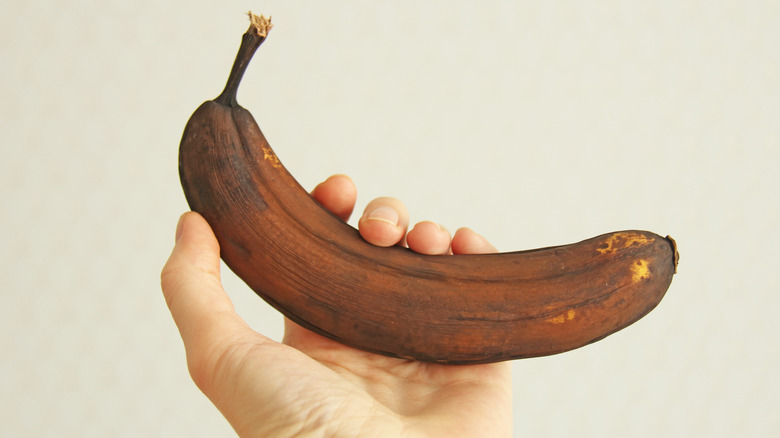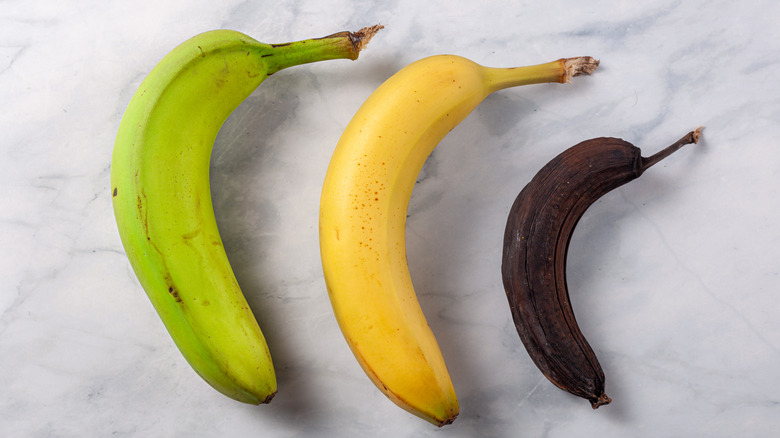Is It Safe To Eat Overripe Bananas?
Have a bunch of bananas sitting on the counter that are past their prime? A super brown, overripe banana may not be the most appealing. In fact, bananas are often tossed earlier than necessary and contribute to the worldwide food waste issue (via Livestrong). But don't throw out those bananas just yet — there are ways to determine if your banana is still okay to eat.
A fully ripened banana with brown spots is perfectly safe to eat, as those brown spots don't affect their quality and actually heighten their taste. The problems arise when the bananas are so over-ripened that they contain mold or are emitting strange odors. That means the banana has crossed over to rotten, according to Livestrong. So why do bananas turn brown in the first place? The ethylene gas produced by the fruit increases as the bananas get older, changing the texture and giving them the brown appearance. This is common in tropical fruits, as they continue to ripen after picking.
How to store bananas to prevent overripening
If you do eat an overripe banana, you should be aware that although the taste can be delicious, you may be losing some of the nutritional benefits. In a brown, overripe banana, the starches have started to break down into sugars. There is a 3-gram increase in sugar in an overripe banana versus a yellow banana (via Eat This, Not That). Overripe bananas also have decreased fiber content compared to their counterparts.
It can seem like within a matter of hours a banana might cross over from ripe to rancid. Proper storage can be key in keeping bananas in the "okay" zone for longer. You can throw them in the fridge once they're ripe to lengthen their life and wrap their stems in plastic, according to Livestrong. For sliced bananas, try spraying them with citrus juice to keep them looking fresh after being exposed to air.
And if your bananas seem like they're getting too ripe for your comfort level, it's the perfect excuse to make a batch of banana bread!


